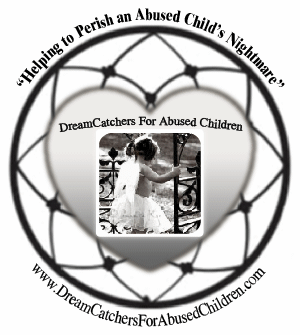In-Kind
IN-KIND CHARITY GIVING/DONATIONS:
In-kind donations are those donations that are done in goods and services rather than money.
Sometimes it is not cash you give, but some other valuable. The most obvious one would be the services of a professional. A lawyer might donate his time to assist in the filing of incorporation papers for a non-profit corporation. A doctor might volunteer to do screening examinations or flu shots. Or a carpenter might build something for a local charity. In each case, they are entitled to a deduction from their income taxes for the value of their time and any costs incurred, because that is a charitable donation.
These are sometimes the most valuable sorts of donations.
A cash gift is nice, of course; but the organization saves twice when it saves all the bookkeeping and paperwork involved in disbursing that cash in accordance with their charter.
The in-kind donation is a simpler and more human one.
A donation in kind is where a product, equipment or capacity of a business is donated to a charitable cause (usually local). This can vary from imperfect stock, to spare or overproduced stock, old equipment, low cost office space or spare transport capacity.
This can help save the need to throw away or clear out items at low prices; whilst helping good causes. This type of donation usually requires more thought than a financial donation, but can be extremely useful to good causes at little cost to your business. It is important however to check with the charity or scheme that your donations are needed.
There are some organizations that collect donations of new goods, and distribute them to worthwhile causes; if you are unsure of a cause to donate to, these could help see your contributions are given to those who will benefit.
4. A Nationwide Haulage Delivery company always has half empty Lorries on Fridays, and offers the spaces to charities that need to send goods between branches or to distant locations; saving them transport costs.
HOW TO MAKE IN-KIND DONATIONS
Step-by-Step Instructions
Determine what organization you would like to help. Charities, non profit organizations, churches and schools are some examples. Choosing an organization that you enjoy or one that you know needs the help is the most beneficial way to go.
Find out from the organization what they may need. In-kind donations can be volunteering your time and services. If you are an attorney, for example, donating your legal services to the organization is a needed service that a monetary value can be placed on (your hourly charges.)
Consider what contributions you may have that can be donated. Loaning funds without interest, providing space in your building for group meetings or the donation of supplies for an organization are examples of in-kind donations many businesses make.
Provide the donation to the organization. Be sure the organization provides you with a receipt for the services or items you are donating. This should include the date of the donation, a description of the item or service donated, the organization’s name and the estimated value of donated services.
Document all in-kind contributions as expenditures. They should be recorded as both a revenue and an expense on your general ledger and on your financial reports. Keep these reports for three years after you have submitted your financial records for taxes.
How Funds Are Used—What We Do:
Coordinate and fund educational topics & information:
* Parenting Education
* Child Abuse Awareness & Education
* Abduction Prevention
* Child Sexual Abuse Prevention
* Anger Management for Parents
* Coloring books on Sexual Abuse Prevention
* Michigan Child Protection Law
* Internet Safety
* Child Abuse Signs & Symptoms
* Child Abuse Reporting
* Child Abuse Intervention
* Child Abuse Recovery
* Child Abuse Prevention
* Provide State Laws
Coordinate and provide education tools to:
(using my images/info/graphics as a power-point presentation)
* Churches
* Law Enforcement Agencies
* Juvenile Detention Employees
* CPS Workers
* Other Child Abuse Agencies
Distribute FREE educational literature:
* Full-colored Child Abuse Awareness brochure
* Business Cards
* Educational Fliers
* Educational Postcards
* Posters
Coordinate and fund awareness education:
* Provide support for individuals (victims & survivors)
* Training & free information for service providers
* Community education & outreach
* Advocacy
* Research & evaluation
* Other prevention measures
* Online Seminars
* Blog Talk Radio Shows
* Family-to-Family
* Peer-to-Peer
* Use Your Voice
* Child Abuse Reporting Classes
* Project EducationProvide Help Services:
* 24-Hour Helpline via Phone
* 24-Hour Help Service via Email
* Assisted over 75,000 people in need in 2010
Working together with:
* Law Enforcement Officials
* National Missing & Exploited Children
* Sex Offender Registry Officials
* Amber Alert Program
* Other Child Abuse Agencies
* Public Organizations
CONTRIBUTIONS ARE DIRECTLY APPLIED TOWARDS PROMOTING CHILD ABUSE AWARENESS & EDUCATION, LECTURES & SEMINARS, DISTRIBUTING FREE INFORMATION BROCHURES & LITERATURE, PROVIDING ONLINE HELP, INFORMATION, ASSISTANCE, HOTLINE NUMBERS & SUPPORT TO ABUSE VICTIMS & SURVIVORS AND PROVIDING RESOURCES TO HELP ASSURE A FULL RECOVERY AND HELP THEM ON THEIR PATH TO HEALING.



















![Validate my RSS feed [Valid RSS]](http://dreamcatchersforabusedchildren.com/wp-content/uploads/2009/10/valid-rss.png)













Lavonnia Lia Says:
I’ll help pass out material and whatever else you need me to. 😀
Posted on July 17th, 2011 at 10:07 pm